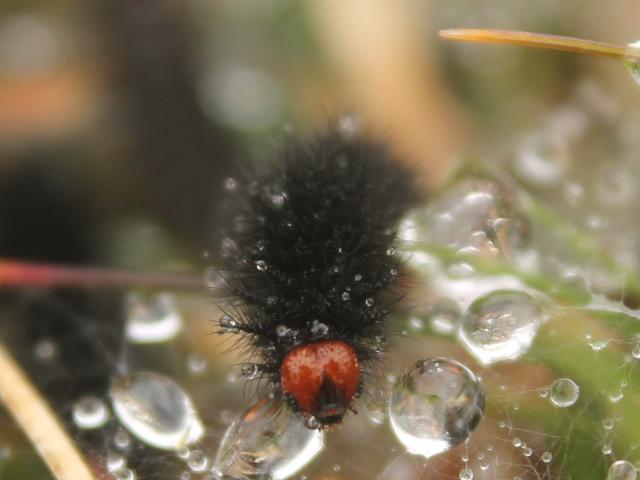The trip across to the Isle of Wight to help monitor the number of webs of the Glanville Fritillary is a real highlight of the year and helps to understand trends in the population size.
The species is restricted to the Isle of Wight in the UK, and is found along the southern coast and a few downland sites. The caterpillars sit on the web and have a bright red head and black, spiky body. The black colour and the species behaviour to communally bask on the silken web allows them to raise their body temperature, before feeding on the ribwort plantain that is common on the slumping undercliffs and cliff tops of the southern coast of the island. The habitat of the Glanville Fritillary is very specific, as the species requires open grassland with plenty of bare soil, essentially a warm, south-facing microclimate for the larvae to develop. The conditions required by the species are provided by continued coastal erosion and slumping of the soft cliffs, which creates open conditions. The habitat is short-lived but continually renewed by coastal erosion in this dynamic ecosystem. The sites themselves are carpeted in ribwort plantain, sea beet and thrift.

The best way to monitor the species is by counting the number of larval webs, which are conspicuous and less susceptible to weather compared to the adults. Surveys are targeted towards key sites and monitored annually in the spring, which provides data on the species trend. This is important for this species as it is prone to large fluctuations in population size, due to weather and foodplant availability. The survey has been coordinated on the island since 1981 by a dedicated group of volunteers from the Isle of Wight Natural History Society, who have high levels of knowledge regarding the species. The results of the 2019 survey were encouraging with an increase in numbers compared to 2018. Several of the sites displayed over 100 webs, many of which were large and covered wide areas of ribwort plantain along the cliff slumps and tops. This is a great improvement from 2013 where only six webs were recorded across the island. The results from 2019 really highlight the importance of both weather and dynamic processes in influencing species populations, particularly one that displays cyclical population trends such as the Glanville Fritillary.
Patrick Cook
Ecologist
Follow me on Twitter: @PatrickCookBC


